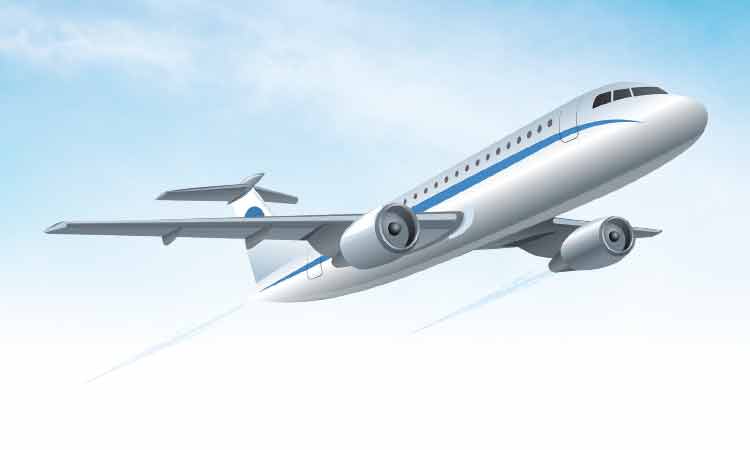Aircraft bearings are critical components in aviation systems, playing a crucial role in ensuring the smooth operation of engines, landing gear, and control surfaces. These bearings must withstand extreme heat, immense pressures, and corrosive environments while maintaining high performance and reliability. The aviation industry’s growing demand for efficiency, safety, and durability has led to the development of advanced materials and technologies for aircraft bearings.
The Role of Bearings in Aircraft
Bearings in aircraft facilitate rotational and linear motion, reducing friction between moving parts and improving efficiency. They are used in engines, landing gear assemblies, flight control systems, and auxiliary power units (APUs). The ability to endure extreme conditions makes them indispensable in modern aviation.
Jet Engine Bearings:
Jet engines experience temperatures exceeding 1000°C and rotational speeds of over 50,000 RPM. Bearings in these environments must withstand intense thermal stress, mechanical loads, and lubricant degradation. Hybrid ceramic bearings, coated bearings, and advanced steel alloys help improve longevity and performance.
Landing Gear Bearings:
Landing gear bearings must endure significant impact forces, temperature variations, and exposure to environmental contaminants like dust, water, and deicing fluids. High-load roller bearings and self-lubricating bearings with special coatings enhance durability and reduce maintenance requirements.
Flight Control Bearings:
These bearings are essential for smooth and responsive aircraft maneuvering. They operate under varying loads and temperatures while providing minimal friction for optimal control response. Needle roller and spherical bearings are commonly used in flight control linkages.

Challenges in Aircraft Bearing Design
Aircraft bearings must meet stringent operational requirements to ensure safety and efficiency. Some of the primary challenges include:
High Temperatures:
Bearings used in jet engines and exhaust systems must withstand extreme heat. Standard materials like stainless steel may not suffice, requiring the use of advanced high-temperature alloys such as M50 tool steel, Stellite coatings, and silicon nitride ceramics.
Extreme Pressures and Loads: Aircraft components experience significant mechanical stresses during takeoff, flight, and landing. Bearings must be designed to handle both radial and axial loads while minimizing wear and tear.
Lubrication and Contamination Resistance:
Lubrication is critical in maintaining bearing efficiency and longevity. However, high temperatures can degrade lubricants, leading to increased friction and potential failure. Advanced synthetic lubricants and solid lubricants like molybdenum disulfide (MoS2) are used in extreme environments.
Advanced Materials and Technologies
The aviation industry continuously innovates to enhance the performance of aircraft bearings. Some of the most significant advancements include:
1. Hybrid Ceramic Bearings
Hybrid bearings combine ceramic rolling elements with steel races, offering several advantages:
- Higher heat resistance
- Reduced weight
- Lower thermal expansion
- Superior wear resistance
Silicon nitride (Si3N4) is a preferred ceramic material due to its exceptional high-temperature strength and low thermal conductivity.
2. Coated Bearings
Surface coatings enhance bearing performance by reducing friction, preventing wear, and improving corrosion resistance. Some common coatings include:
- Diamond-Like Carbon (DLC): Reduces friction and enhances durability.
- Plasma-Sprayed Ceramics: Provides thermal insulation.
- PTFE and MoS2 Coatings: Improve self-lubrication and wear resistance.
3. High-Performance Alloys
Specialized alloys like M50 and Pyrowear® 675 provide excellent heat resistance and mechanical strength, making them ideal for aircraft applications. These materials exhibit superior hardness and resistance to thermal fatigue.
Future Trends in Aircraft Bearings
As aviation technology evolves, new trends are shaping the future of aircraft bearings:
Smart Bearings:
The integration of sensors in bearings enables real-time monitoring of temperature, load, and vibration. Smart bearings facilitate predictive maintenance, reducing downtime and enhancing operational safety.
Additive Manufacturing (3D Printing):
3D printing allows for the production of complex bearing geometries with optimized material properties. It enables weight reduction, improved heat dissipation, and faster production cycles.
Sustainable Lubrication Solutions: The aviation industry is exploring environmentally friendly lubricants, such as bio-based and nanoparticle-infused oils, to improve performance while reducing environmental impact.
Conclusion
Aircraft bearings are engineered to withstand extreme heat and pressures while ensuring efficiency and safety. Advances in materials, coatings, and smart technologies continue to push the boundaries of bearing performance. As aviation demands grow, innovations in bearing technology will play a pivotal role in improving aircraft reliability and operational efficiency.



